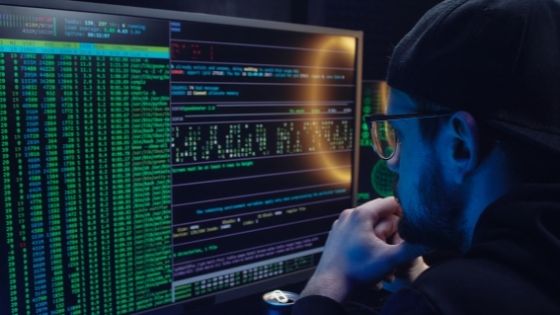You can find computers in different places, including planes, cars, railroads, and vehicles. If you check the Internet of Things, you’ll find them in your belongings, such as wearable devices. Ipads, laptops, and smartphones are modern versions of what used to be giant mainframe computers, providing computational power and comfort.
You can use the term ‘code’ to define the philosophy underpinning all of these structures’ pleasant functions and user interfaces. Code is the foundation of all computing, governing the ins and outs of computer equipment. It can be tampered with by cybercriminals and attackers where code signing authentication systems come in.
• What do you mean by code signing authentication?
A virtual sign that programmers apply to the source of software to protect it from tampering is known as Code Signing Authentication. It assigns a digital ID to the author who distributes or produces the code using sophisticated mathematical algorithms. It ensures the code’s uniqueness and increases the consumer’s faith in the software’s creator or publisher.
Code signing solution addresses the challenging problem by ensuring that no malicious download sites grab a copy of your program and begin disseminating malware-infected code.
Somebody with a malicious purpose may publish your program to a rogue website so that people can download it for free, but they may also include some virus or malware as part of the distribution. If your customers value the product you create or publish, the malware correspondent has scored big: they may easily hide their malicious program behind the published code.
It is inevitable that your customers will adore the software you develop and publish. That means the malware correspondent has hit the jackpot-they can comfortably hide their harmful software behind your code.
The function of a Code Signing Certificate is similar to that of an SSL certificate. Typically, Code Signing Certificates are associated with a secret key, which the application/software’s publisher keeps secret.
• Best Practices
Code signing does not protect software from abuse, manipulation, or malicious intent. When it comes to handling secret keys, there is a substantial human aspect at play. Following a few industry-standard best practices may help code-signing to be efficient.
Image source
• Restrict access to keys
Restrict role-based permission to private keys to reducing the risk of being misused or stolen. For example, an attacker with access to a genuine private key may impersonate the programmer and distribute problematic code to unwitting users.
• Critical security standards
Increasing the level of protection for the private keys by using safe vaults and HSMs, Contributes significantly to the security of private keys or other encryption resources. To certify pre-release codes, use self-signed certifications or certificates provided by an internal CA.
• Take precautions
Regardless of the level of protection enforced by software providers, the user must choose to ignore cautions and install a program that has not been code-signed. In addition, to get the most out of the system, one must exercise their best judgment and avoid installing untrustworthy software.
Top 5 Benefits of Code signing Certificate:
• Validates the integrity of the code
Code signing uses a hash function to verify the code’s authenticity. The hash function is often used to verify the information at the source, and the hash must be verified at the destination. It proves the code’s integrity. Clients will get a security alert, or the code will not run if the hash does not match.
You can do the verification using a timestamp. You may use optional timestamps in code signing. During the signing, a data strip is added with the signature. This procedure assures that the certificate is legitimate at the moment of signature.
Your encryption can’t be modified or spread with unaccepted adjustments because virtual impressions carry evidence of information integrity. The cipher integrity is unaffected if the hash is used by experts to identify the app.
• It assists you in maximizing revenue and distribution across platforms
The rise of malware and the development of consumer apps for desktops have made code signing more crucial than ever.
Before consenting to distribute code, mobile network operators and software publishers require code signing from a credible Certificate Authority. More platforms support code signing than any other code verification vendor.
• There is no security warning
A warning sign is something that no one loves. You may assure a seamless installation process for your consumers by using a code signing certificate. In addition, all of the positive signals boost your software’s expert reputation and positive customer feedback.
Creating and maintaining a company’s image and authenticity. Code signing procedure for software or programs identification and validation removes the chance of program modification and tampering.
• It will protect the company’s image and copyright
Companies can gain more from customers believing their software, files, and other downloads by improving confidence on both sides of the discussion. With a boost in reputation, you may expect a significant improvement in consumer loyalty. To distribute software to consumers, software developers and network platform providers need code signing from a trustworthy source.
It is even more advantageous for small businesses or individual developers who want to enhance their brand awareness and revenue by gaining client trust through authenticity.
• Safe experience
The code signing procedure fosters mutual trust between the parties involved, namely the seller and the consumer. Customers who utilize code-signed programs or files can be confident in their security since the code has been verified and validated, preventing tampering.
When code is verified by a trusted CA, there are fewer security alerts and installation problems, resulting in a better user experience. Many computers will require code to be signed with a certificate from a trusted CA and reject action orders from untrusted sources.
Conclusion
As a programmer, code signing is critical for the security of your product. Even if you’re a program user, it’s necessary because it confirms that you’re getting a genuine package. It’s never too late to attempt if you’re a computer programmer and haven’t considered using a code signing certificate to secure your product. You now have the data in your grasp. Use it and watch as your software company soars to new heights.

















